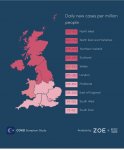Alvez_48
Well-known member
So, reports saying that the error was as a result of using an Excel spreadsheet as a database. Each case per column rather than a row, which runs out at around ~16k.
How much money has been put into this?
That is absolutely ridiculous... Imagine the meeting 'we will just pop it all on a CSV file no worries.'

